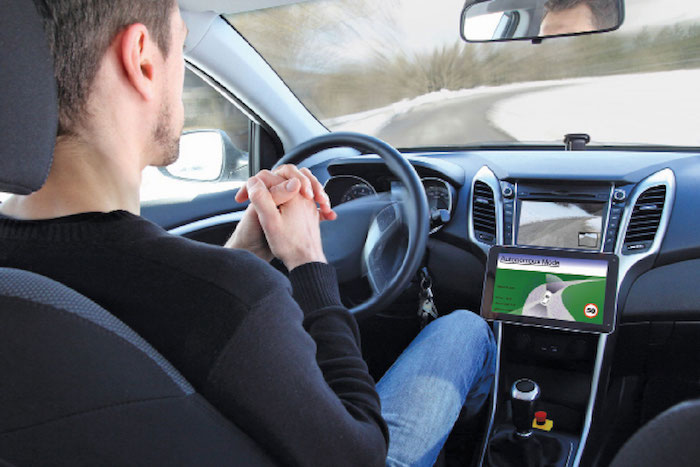Road safety slogans like ‘Alert Today; Alive Tomorrow’ might become redundant in the future with the kind of safety, information, communication, entertainment and comfort features that are being built into today’s cars.
We add to that fascination some lesser-known but equally exciting research projects, which are bound to augment the capabilities of tomorrow’s smartcars.
Born-in-Bengaluru tech could help the visually impaired to drive
Since late last year, Tech Mahindra has incubated special goggles designed by its employee Kunal Bhat. Bhat, who accidentally banged his head on a wall in a dimly-lit staircase, decided to set about finding a tool that could help the visually impaired to visualise obstacles in their way much before these are sensed by their canes.
Working on this idea, he developed smartgoggles, which together with a smartphone, helps users to sense things on their path and form a 3D mental image of their surroundings.
How does it work? The smartphone camera captures the user’s environment, identifies objects of collision and calculates their position and distance using special algorithms. This information is wirelessly transmitted to the goggles. The smartglasses fitted in the goggles convey this information to the wearer through haptic feedback. It uses mild vibrations from relevant directions to help him or her feel the world around, for a radius of 1.5m (5-feet). A fluent flow of vibrations helps the user form a 3D mental image of the surroundings.
The current prototype is being tested by Tech Mahindra at Bengaluru with the help of two social organisations. Future versions are expected to have more capabilities like audio feedback, context-sensitive analysis, location and direction feedback, cloud based analysis, collective intelligence and inter-device communication.
Why this is featuring right at the beginning of a story on smartcars is because Tech Mahindra believes that this technology can be adapted to applications like autonomous cars and plans to upgrade the application to driverless cars in the future.
The mystic appeal of quantum tech to navigate into the future
The Global Navigation Satellite System (GNSS), which is being relied upon today for almost all forms of navigation, including that of smart and autonomous cars, is not without its share of flaws. For one, it depends on signals sent to and from satellites launched into outer space, which makes it a costly affair to maintain the constellation and improve capacity.
Secondly, there are occasional reports from the US government agencies about GNSS-related security risks and their vulnerability to attack. Limitations of GNSSes under water are also known, making these ineffective for use with submarines.

In order to overcome all this, scientists at the UK Defence Science and Technology Laboratory (DSTL) have developed a quantum compass that can achieve similar functions using the subatomic changes in Earth’s magnetic field.
The technology used is totally unlike anything you have heard of before. Special lasers are used to cool atoms to temperatures much colder than outer space. At such low temperatures, the slow-moving, low-energy atoms become extremely sensitive to changes in Earth’s magnetic and gravitational field. According to the team’s press report, “If trapped on a small device, their tiny fluctuations can then be tracked from great distances away and their locations pinpointed with a huge degree of accuracy.”
What makes this technology appealing to smartphone companies and autonomous carmakers is that, it has a very high degree of security. Unlike a GNSS, no outside interference can disrupt it. Bob Cockshott of National Physics Laboratory, the UK, commented in a media report that, “There is nothing in physics that could be used—given the knowledge we have now—to disrupt one of these devices.”
It is expected that usable quantum compasses will hit the market by 2019. These will be so small that these could easily be fitted into small chips, making these easy to use, not just in vehicle navigation but also in a variety of devices including smartphones.
Game to print your car
Talking of smartcars, here is a smart way to make your car! At the annual motor show in Detroit this year, Local Motors was seen 3D printing a car. The American motor vehicle company attaches no fixed location or mammoth factory to their brand. They call themselves a free online and physical workspace where creativity, collaboration and design drive vehicle innovations. They claim that the future will be characterised by microfactories, where small work areas will become car factories. Perhaps one day, you could use your garage for more than parking your car; you could be making cars in it!










